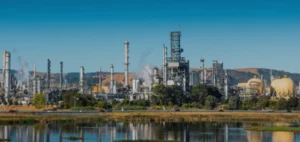U.S. commercial crude oil reserves jumped by 9.9 million barrels, much more than expected, but fuel oil and diesel reserves fell, according to figures released Thursday by the U.S. Energy Information Agency (EIA).
Analysts expected commercial crude inventories to rise by 1 million barrels for the week ended Oct. 7, according to a Bloomberg analyst consensus.
Inventories of distillate products, including diesel and heating oil, on the other hand, fell by 4.9 million barrels against an expected decrease of 2 million barrels.
These fuel reserves are now 23% below their averages of the last five years.
This melting of distilled product reserves caused the market to react and immediately pushed up crude oil prices.
By 16:00 GMT, Brent North Sea crude for December delivery was up 2.20% to $94.51 a barrel, after falling a few minutes before the figures were released, due to a poor U.S. inflation indicator that raised fears of a recession.
The barrel of West Texas Intermediate (WTI) for delivery in November gained for its part 2.29% to 89.27 dollars.
“The big concern is this distilled product number. Reserves are dangerously close to the meager level of 100 million barrels which will be a first since 2003″, alarmed Robert Yawger of Mizuho USA.
“As a result, the presumption is that when it’s the middle of winter, refiners are going to have to use a lot of crude oil to produce more distillate products,” while some U.S. regions still rely heavily on heating oil, the analyst said.
This outlook paradoxically drove prices up, even though the overall crude oil reserve figure rose, which normally drives prices down.
Gasoline inventories rose by 2 million barrels against a decline of the same amount expected by analysts.
The sharp increase in crude oil inventories is explained in particular by a drop in exports (-1.6 million barrels per day), by a slight increase in imports at the beginning of the winter (+116,000 b/d) whereas they had fallen sharply the week before, and especially by a decline in consumption, particularly for gasoline.
Demand for petroleum products fell on the week by 1.5 million barrels per day to 19.2 million. Over four weeks, it is 3.8% lower than at the same time last year.
U.S. production also fell by millions of barrels per day (-100,000).
The U.S. administration has also continued to draw on strategic stocks (SPR), which are at their lowest level since 1984.
As a result, they fell last week by 7.7 million barrels to 408.7 million.
Since U.S. President Joe Biden’s administration requested the use of these reserves in September 2021, they have melted by 208 million barrels.






















